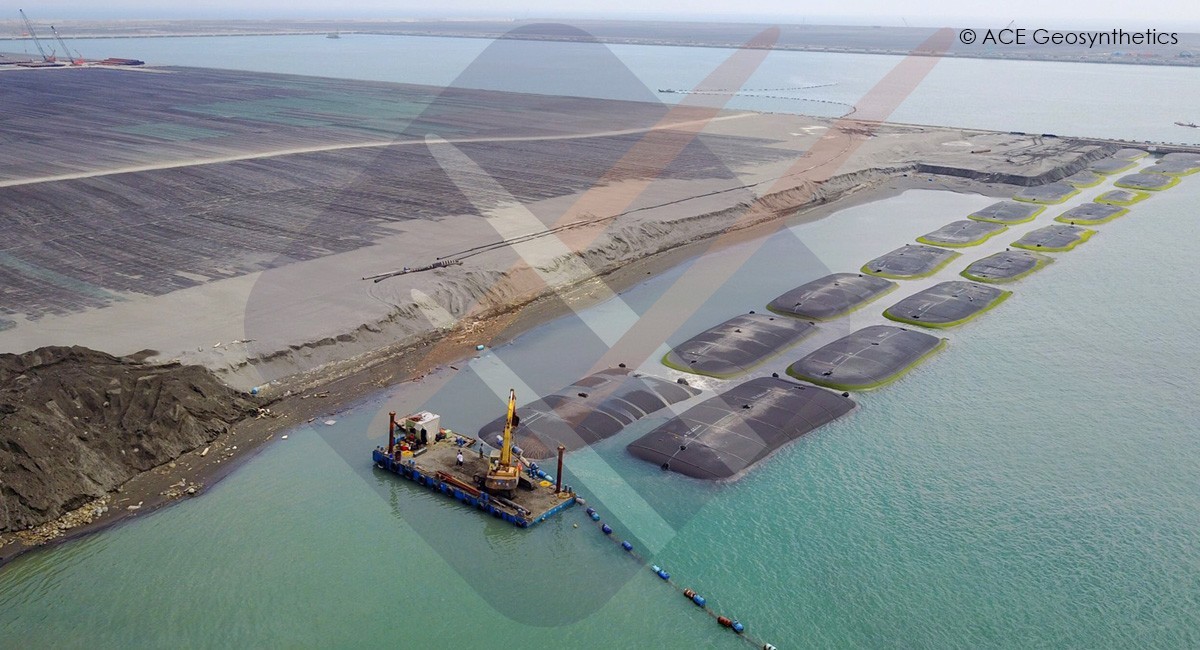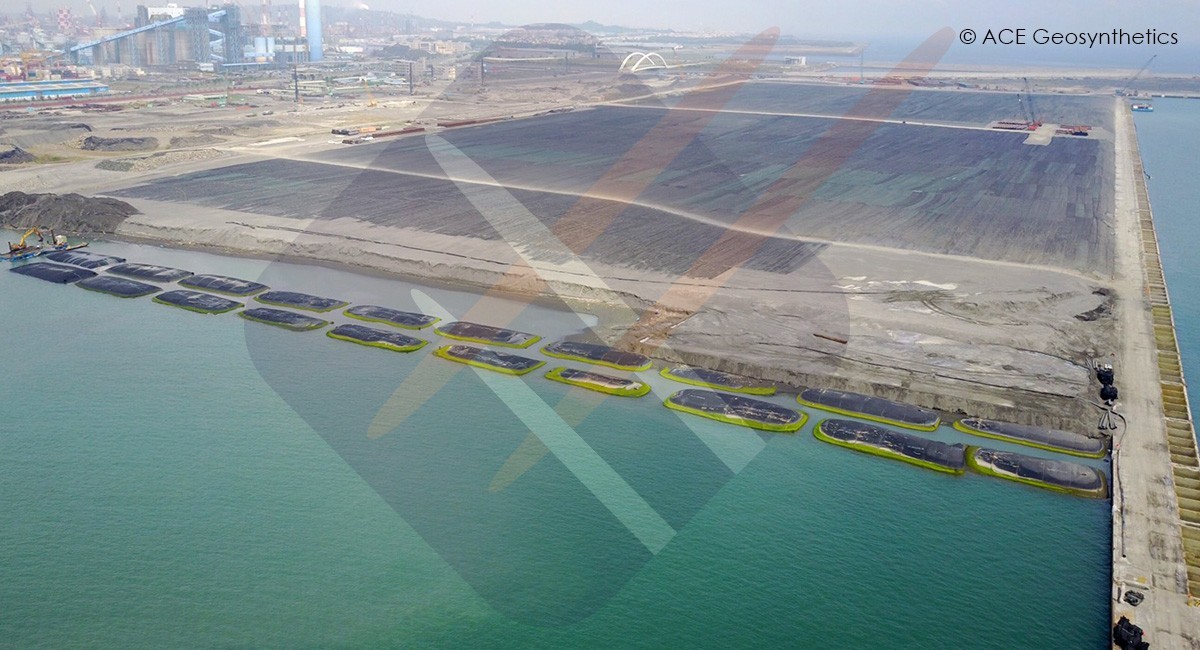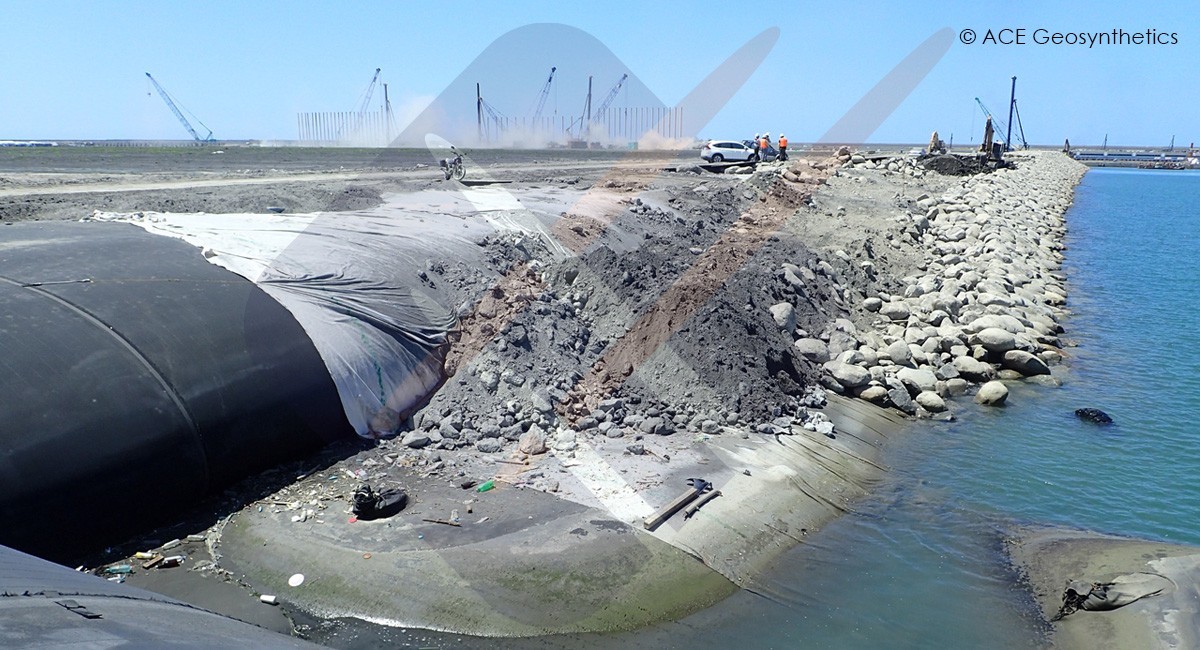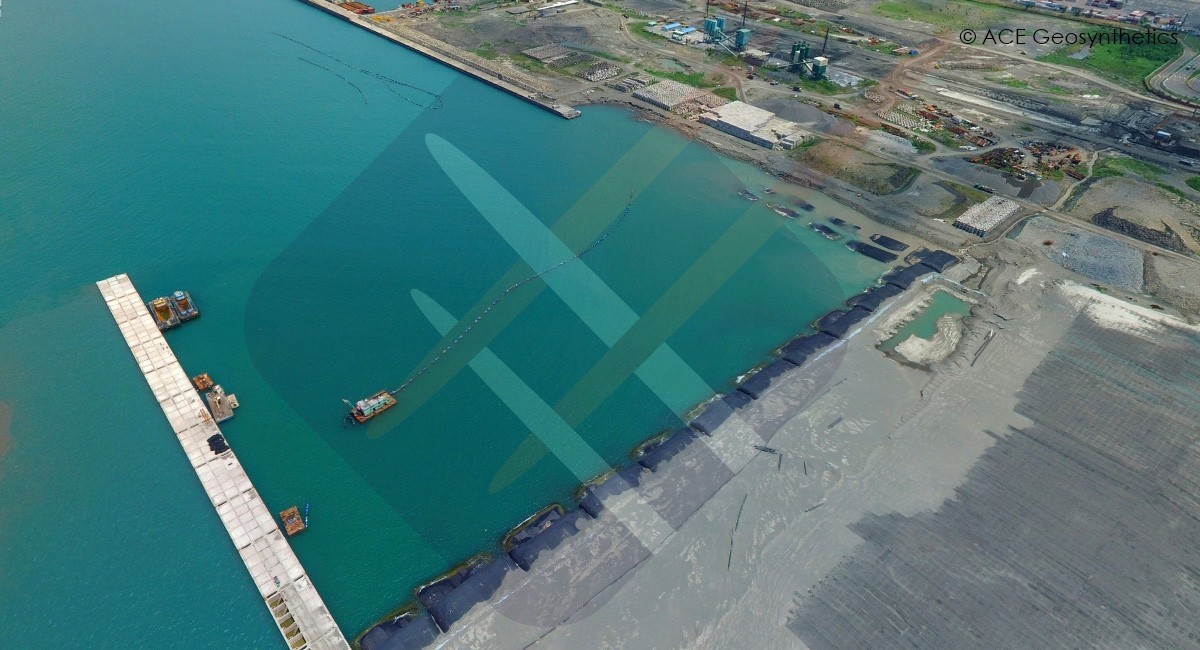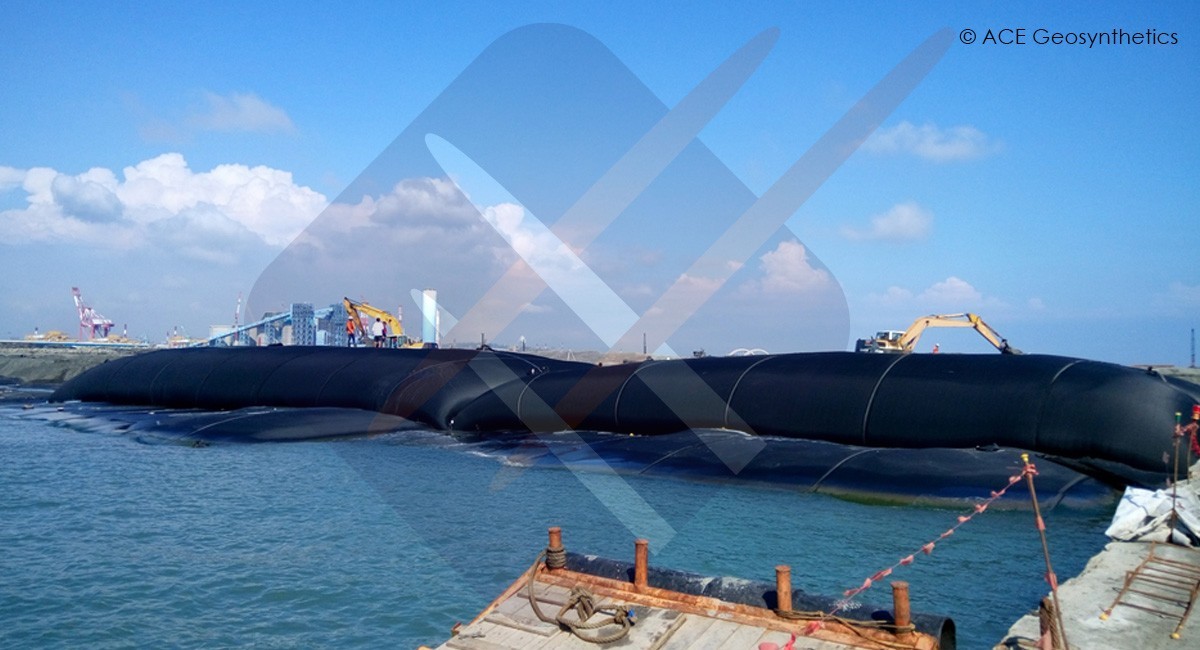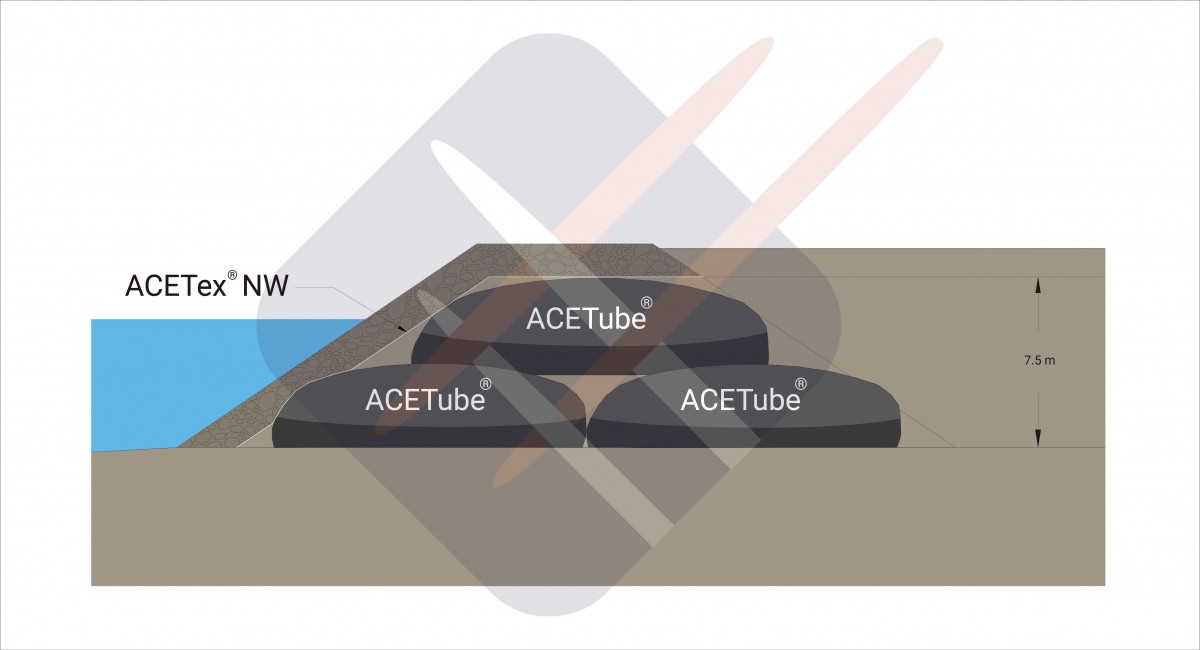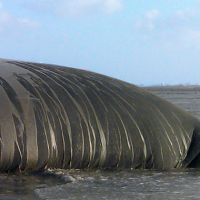Taiwan | 2015-2019
Use Giant Geotextile Tube for Temporary Cofferdam Reclamation at Harbor, Kaohsiung, Taiwan
Products:ACETube® - hydraulic structures
Application: Cofferdams
-
Background
-
Kaohsiung Harbor is the 15th largest container harbor in the world with an annual capacity of 10 million TEUs. It is important to ensure the port capacity is sufficient to accommodate the containers and the cargo ships.
The land reclamation project was located in Kaohsiung Intercontinental Container Center Phase II Project. The reclamation design consisted in two steps, including a north-south container terminal and temporary L-shaped cofferdam. Caissons and geotextile tubes were the main materials for construct the abovementioned structures. Sand dredging area was prepared for the purposes of seabed clearance and backfilling of geotextile tube. -
Problem / Task
-
Due to 4-meter underwater depth of construction site, giant geotextile tube (ACETube®) were thus required to be designed and constructed to overcome the difficulty of an underwater basement. A temporary cofferdam on the seaward side was a must to prevent the reclaimed tidal land from threats of the erosion and enhanced the stability of backfill area. The subsequent progress and development of the project should be ensured.
The concerns of the costs, harms of the ecosystem as well as the engineering feasibility should be considered completely. -
Solution/ Design & Construction
-
The temporary cofferdams built at the S4~S5 terminal of the Kaohsiung Intercontinental Container Center were divided into east-west and north-south directions. The designed height of the levee was 7.5 m and the total length of the structure was 700 m, which aimed to reduce backfilling and erosion of the tidal land during the rainy seasons or typhoon attack. Considering the in-situ oceanographic data, geotextile tubes were stacked in the pyramid form. Type A with 36 m circumference were installed on the bottom layer and Type B with 32 m circumference were on the upper layer. A layer of non-woven fabric was laid on the surface of geotextile tubes as a separation layer before 300~500 kg riprap was covered as the surface protection.
-
Result
-
Compared to the traditional engineering method, using geotextile tubes can utilize in-situ materials to reach cost-effectiveness, and provide innovative and ecological engineering solutions to prevent harms from the local environment. Also, a large amount of carbon emission can be reduced with eco-friendly geotextile tube construction method. The high tensile strength, great permittivity and light weight provided by geotextile tube (ACETube®) grant the economic benefits, convenience and timeliness during the construction. On the other hand, geotextile tube with a need of sand filling gives a new usage of submarine dredged sand.
Two major functions of the geotextile tube were presented. First, the geotextile tube acted as a core of the riprap-covered temporary cofferdam to withstand wave erosion causing losses of backfill sand; secondly, the geotextile tube were filled with in-situ sediments from the seabed, which occupied certain volumes of the clearance. After those were backfilled in geotextile tubes, there were more allowance provided for large ships.
In conclusion, taking the multifunctionality, the construction costs as well as the impact of the ecology into the consideration, geotextile tube is seen as the most suitable solution in this case.
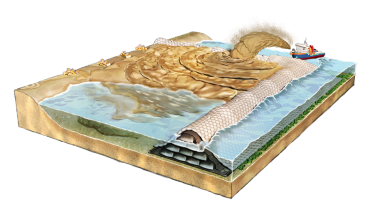
Cofferdams
Temporary water-barriers are cost-effectively built with ACETubes®. The geotextile tubes protect against water forces thrashing along the exterior of coffer...
Related Products
Similar Case Studies

Cofferdam Construction for Renewable Energy Plan, Taiwan
Application:Cofferdams
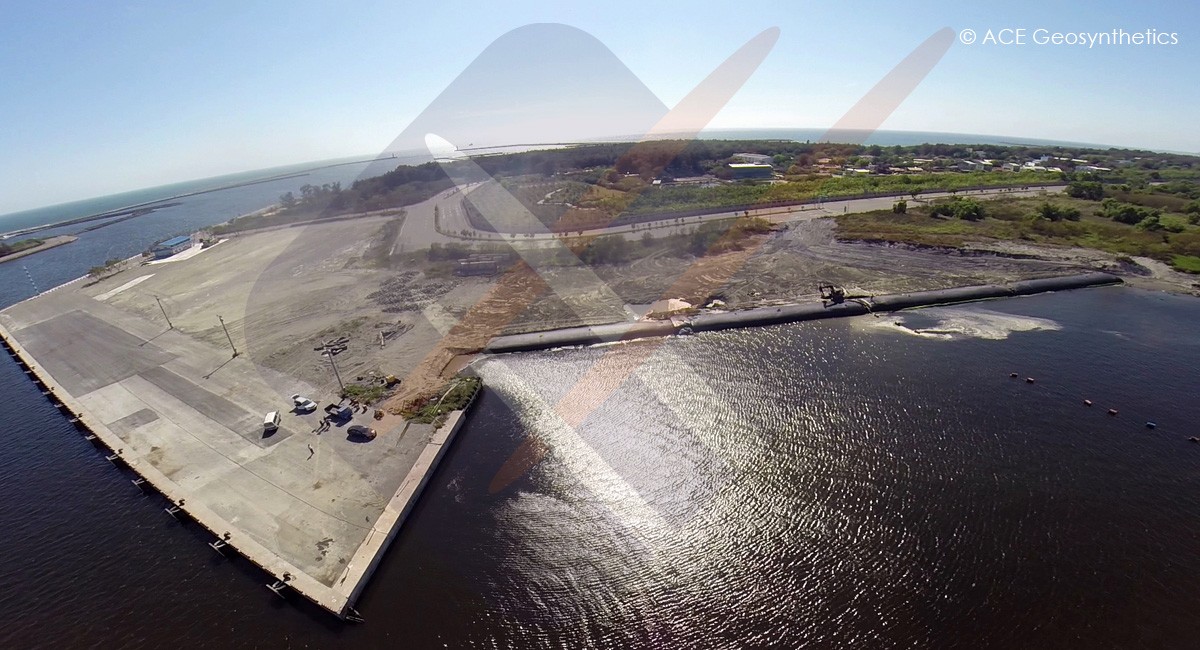
Dredge and Land Reclamation, Anping Harbor, Tainan, Taiwan
Application:Sediment Dredging, Seawalls and Bulkheads
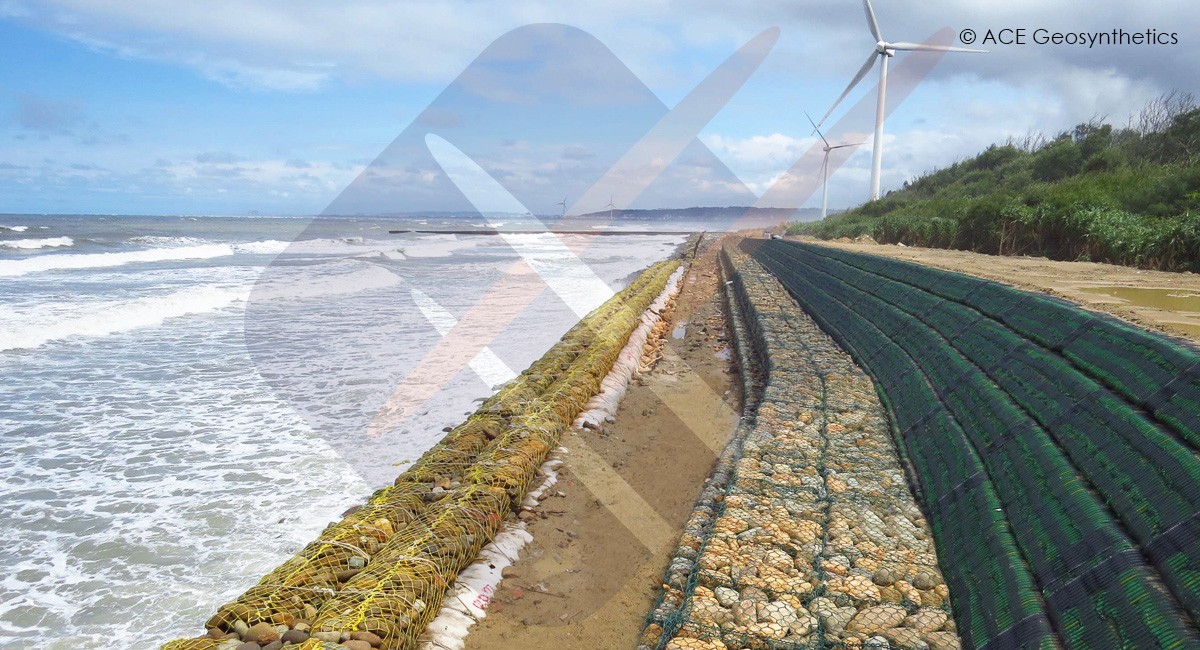
Coastal Protection, Xiangshan Wind Farm, Hsinchu, Taiwan
Application:Seawalls and Bulkheads, Revetments
